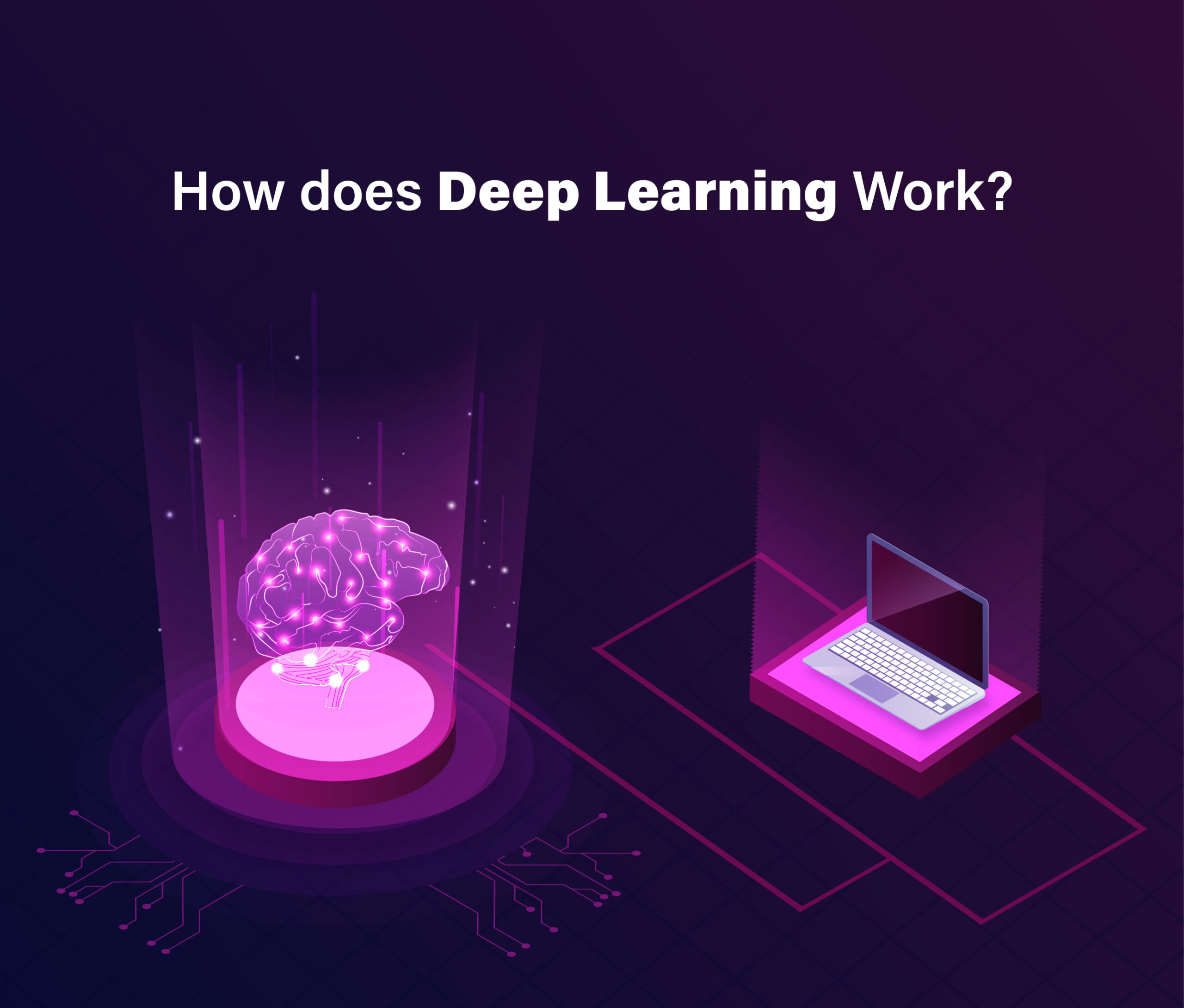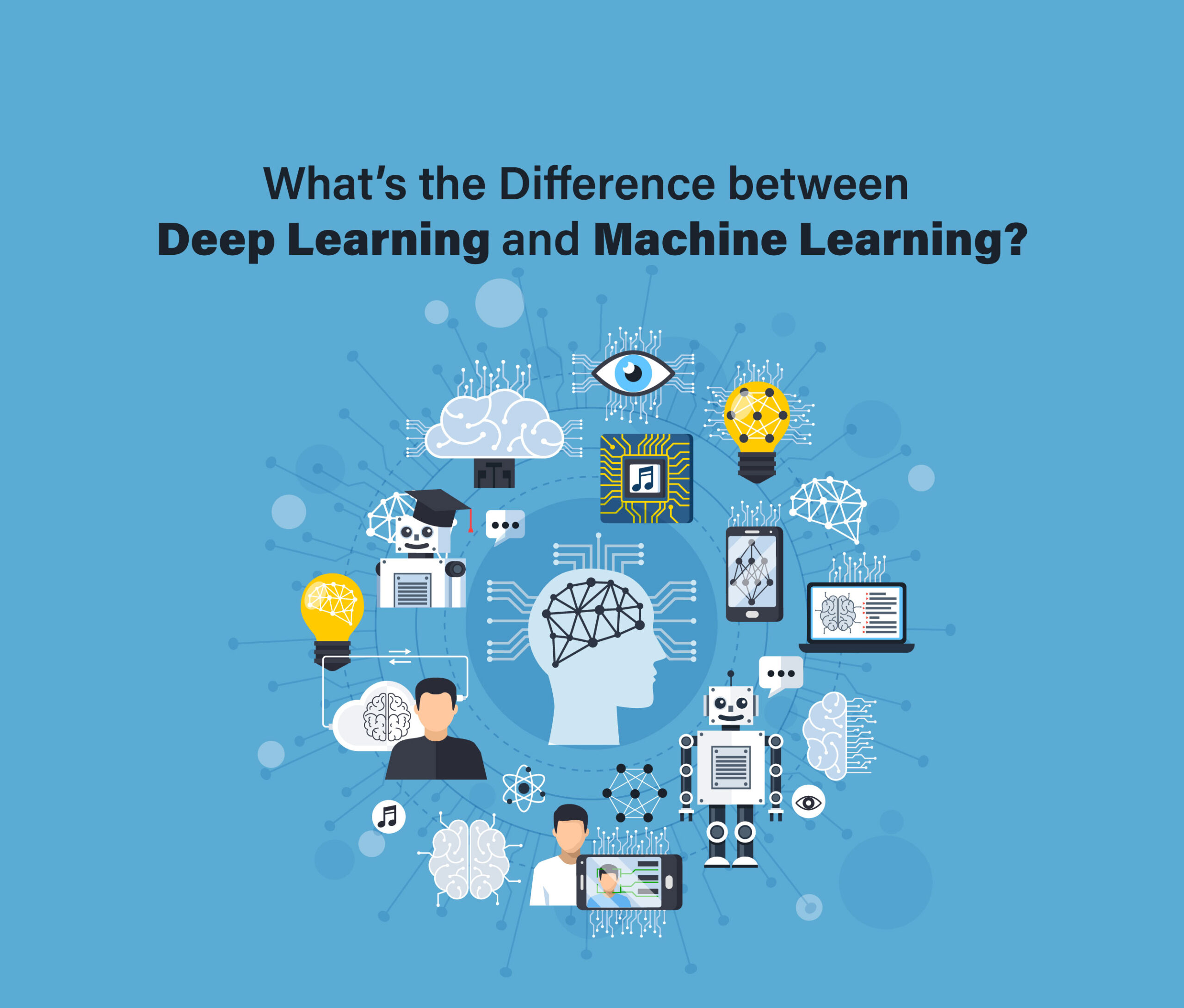Have you ever wondered how self-driving cars were invented? Or how Google can translate entire paragraphs from one language to another in an instant? Or how Netflix and YouTube can provide helpful recommendations?
Cool innovations are the results of deep learning (DL), which is like the fancy cousin of machine learning. DL experiments with artificial neural networks.
Let’s talk more about DL as we move ahead in this blog.
What is Deep Learning (DL)?
Deep learning (DL) is a type of machine learning that doesn’t need human expertise. It can learn patterns from different kinds of data like photos, videos, and text. When talking about DL, the term “deep” refers to the many layers of neural networks or algorithms. These layers help in detecting patterns in data. DL architectures are highly adaptable. They can learn from raw data, just like the human brain. As more data becomes available, their predictions become more accurate.
DL is the main technology for tasks like speech recognition, language translation, and object detection. It has led to many recent advances in AI, such as Google DeepMind’s AlphaGo, autonomous vehicles, and intelligent voice assistants.
How does Deep Learning Work?

DL alters the way you conceptualize and express the issues you’re trying to solve. When using DL, data helps the computer learn on its own. It does this by identifying patterns through multiple layers of processing. If you’ve never heard of DL, you might be curious as to how it works.
Imagine you develop a tool that can tell parsley from cilantro. Two very distinct herbs. You need to tell the machine learning tool what characteristics it can recognize. It would be the leaf kind in this instance. DL has allowed neural networks to identify traits on their own. This happens through automated and unsupervised learning.
DL offers the potential to create prediction systems that work well in various situations and continue to improve with more data.
Also Read: AI in Robotics: The Robots Are Not Taking Over (Yet)
Notably, deep learning with Python empowers innovation by enabling advanced neural network models. This combination is versatile and leads to new ways of using technology. It can be used for tasks like recognizing images and understanding language.
Deep Learning in Practical Scenarios
Deep learning applications are used in various aspects of our daily lives. However, they are often seamlessly integrated into products and services, making users unaware of the complex data processing happening behind the scenes. Some of these examples are highlighted below:
● Law enforcement
Deep learning systems analyze transactional data to identify patterns of fraud or illegal activity. Applications like speech recognition and computer vision use evidence from recordings, photos, and documents to enhance data analysis for law enforcement, making it faster and more accurate.
● Financial services
Financial institutions often employ predictive analytics to assist with algorithmic stock trading, evaluate business risks for loan approvals, detect fraud, and help clients manage their credit and investment portfolios.
● Customer service
Businesses use DL in customer service, along with AI solutions like chatbots. Basic chatbots can understand language and images. More advanced chatbots can answer difficult questions with multiple possible answers. These bots are made to answer questions or guide users based on feedback. They need very little human intervention in specific situations. Virtual assistants like Siri, Alexa, and Google Assistant use speech recognition for personalized interactions.
● Healthcare
With the advancement of technology in the medical field, the use of digital data and images has greatly improved healthcare. Imaging specialists and radiologists can use image recognition software to analyze and evaluate images more quickly.
What’s the Difference between Deep Learning and Machine Learning?

“Deep learning” and “machine learning” are sometimes used interchangeably but they have some differences. What are these two ideas that often come up in AI discussions and how do they differ? Keep reading to find out.
1. Human Intervention
For machine learning to produce results, more constant human engagement is needed. While setting up is more complex, DL demands minimal intervention once in operation.
2. Hardware
Machine learning programs are simpler than deep learning algorithms. They can run on regular computers, while DL requires powerful hardware like GPUs with high memory bandwidth and thread parallelism to effectively manage latency.
3. Time
Machine learning systems are quick to set up and run, but their effectiveness may be limited. Although they take longer to set up, DL systems can produce results instantly. It’s important to note that the quality may improve as more data becomes available over time.
4. Approach
Machine learning uses traditional methods like linear regression and structured data. On the other hand, deep learning utilizes neural networks to handle large amounts of unstructured data.
5. Applications
Your bank, doctor’s office, and mailbox are already employing machine learning. DL technology allows advanced and self-operating programs like self-driving cars and surgical robots.
Deep Learning at Its Best
Apart from your music app suggesting tunes you’d like, DL impacts lives in various ways. Facebook automatically tags friends in your photos. Digital assistants like Siri and Alexa utilize it for language and speech tasks. Skype offers real-time speech translation, and email platforms filter spam effectively. PayPal uses it to prevent fraud. Apps like CamFind can identify objects by analyzing pictures from mobile visual search.
Google uses deep learning to come up with novel solutions. Go champions were beaten by AlphaGo. WaveNet creates speech that sounds like normal human speech. Google Translate uses it for accurate language translation. TensorFlow, Google’s DL software, encourages building AI applications. With Google.Planet, you can find locations in your pictures.
DL is on the verge of revolutionizing society. Neural networks are improving self-driving cars. They help cars recognize objects and traffic lights, and adjust their speed. These networks allow people to make decisions such as selling stocks or evacuating. They also provide forecasts for the stock market and even the weather. DL can potentially improve healthcare in two ways. Firstly, it can help develop treatment plans. Secondly, it can aid in identifying cancers earlier, leading to saved lives. Explanation: The
Reaching the Finish Line
The transformative realm of deep learning algorithms stands as a beacon of innovation. Its impressive growth has led to many different uses of deep learning in various industries. It has shown its power in transforming healthcare, finance, and more. Technology is changing thanks to deep learning. It helps with image recognition, language processing, and predicting things. The digital age is complex, but the impact of DL will expand and bring new solutions. It will push the limits of what we can achieve. As we continue to evolve, our future becomes limitless, driven only by our imagination.


